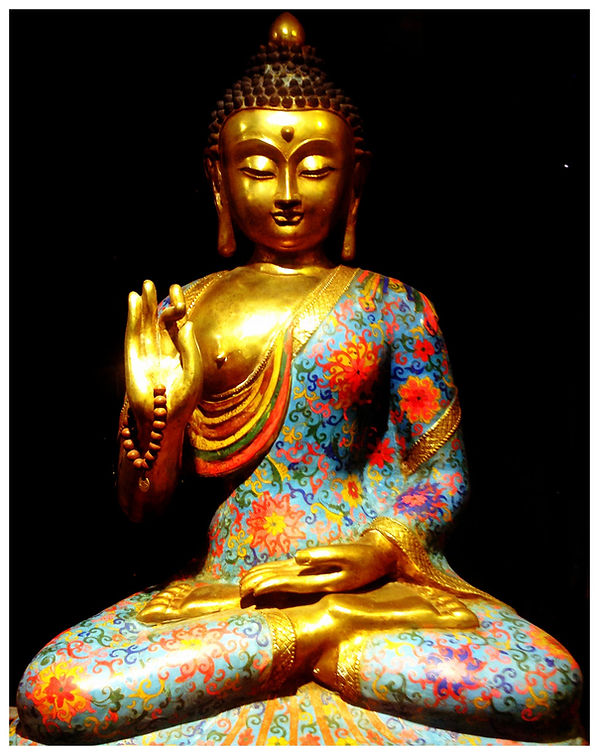
The Gift of Amashen
WHO IS AMA?
We all are Ama but in our separate, individual, and superficial sense of identity – usually known as ego – we do not know we are Ama. This is because Ama is inclusive, universal, and deep. Our usual, limited sense of identity fails to grasp this. However, even in our separate and individual identity, we are all held in the embrace of Ama’s inclusive identity. All life is held equally in this embrace.
Venus of Willendorf ~ Between 28,000 and 25,000 BCE
Ama, as Mother Goddess, has always been known. Some of the earliest art includes depictions of Her. Every religion, without exception, has something of Her Presence even when it is well hidden. Among the Israelites, whom we are often told only worshipped a single male God, She was known as Asherah. Later, in the esoteric Kabbalah tradition which has extremely ancient roots, She was known as Shekinah – the Presence of God. Even in Islam, which seems at first glance to be completely devoid of feminine qualities, Allah is described as gentle, tender, merciful and compassionate. The word for merciful, “Rahmin” is derived from the Arabic for womb or matrix. In Christianity Ama can be seen in the Blessed Virgin who is called the Mother of God and who was responsible for giving birth to divinity, Sophia who fell from the Heavenly realm bringing all life with Her, and the Holy Spirit which, if it were not for the masculine bias of the early Church, might just as easily have been named the Sacred Soul.
Buddhism, Judaism and Islam are the most opaque of all the world’s religions in relation to Ama. Hinduism, Christianity, and Western Paganism are more transparent. Divinity has always been recognised in both feminine and masculine forms. The list of pagan goddesses is endless. Hinduism has also preserved an ancient goddess tradition which was present a long time before the male Arian sky gods arrived. Buddhism provides a more oblique approach: While there is no shortage of female divinities in the Buddhist pantheon Ama reveals Her presence most of all in the depictions of the Buddha himself. So many statues and paintings of the Buddha have an ambivalent gender and some bear an uncanny resemblance to ancient Palaeolithic statuettes of the Mother Goddess dating back as far as 40,000 years. Ama’s presence does indeed seem to be eternal.
Our Lady of Grace
So, Ama transcends all separations, especially those which divide religions from one another. Today we can transcend even Her religious vestments and recognise Her Eternal Presence within and around us as psyche and cosmos in purely secular terms. This makes Her no less sacred for, through Her presence, everything is sacred.
Ama also transcends all the apparent divisions which appear between people. From Her perspective time and space are illusory so that nothing can separate us spatially or temporally. She is the "I am" we all call ourselves.
WHAT IS AMASHEN?
Amashen is Ama’s Eternal Presence. She is here for us whether we know it or not. Her Shen presents itself to us as ourselves, as our unique individual sense of selfhood. Like a child who has been given a priceless gift, we forget who we are and throw away the gift as worthless. This gift is returned to us later when we have grown weary of our loss. It is represented here in seven empowerments which remind us of who we are.
THE GIFT
Amashen is a gift. However, in order to receive this gift in its completeness, each empowerment requires that we give of ourselves wholeheartedly. This giving of ourselves is a gift to ourselves. Not everyone is ready to do that. Not everyone can trust enough to offer their whole heart, but Ama, who is the Mother of our Hearts, would prefer our whole heart so that she can place her whole gift within it. A whole and open heart is a fitting vessel for such a gift. The more we can open our hearts and surrender to who we are deep down, to the love that we are, the more fulfilling the gift will be.
In giving our whole heart we are asked to trust and trusting is not easy. We are asked to be sensitive to and trust our intuition. If we hold back with doubt in our mind we will find that the flow of grace from Ama is impeded and we will say to ourselves "I can't do this!" or "It doesn't work for me." and we might lose interest because we are not getting results fast enough. If we put everything into it the results will astonish us.
Another issue is the anticipation of outcomes. There is a huge paradox here. The less energy we invest in the results of our practice the better the results will be. This is as important when we use Amashen as a spiritual practice or when we use it as a healing modality.
Another vital point to make is that the effects of these empowerments accumulate over time. A whole-hearted commitment involves using the techniques routinely, each day if possible, so that a rhythm is set up within our bodymind - the pulse of Amashen beating within our heart and throughout our energy system which includes those energy pathways which conduct life-force through our bodies as well as the network of energy threads which connect us to our natural and social environment so that everything in our lives is filled with the grace of Ama.
With this whole-hearted dedication and commitment, things may begin to happen in our lives that cannot be explained. That which seemed impossible becomes possible, probable and then inevitable. With our whole heart committed to this gift, the miraculous can enter our lives.
Ama is the mother of consciousness, of awareness and of life - the mother of us all. Her "Shen", which is a Chinese word usually translated as spirit, mind, and consciousness, here it is translated as Eternal Presence. It is a gift that never stops giving. It is always here for us if we want to accept it. She offers it freely because it is priceless.
AMA AND ABBA
If Ama is the Divine Feminine, the Mother Goddess, and the Eternal Presence then what of the Divine Masculine, the Father God? Is this the Eternal Absence? The simple answer is yes. Unfortunately, it is not quite that simple. It would be convenient if we could avoid any religious terminology. People get into such a tangle of opinions when the subject of religion comes up but Ama has always been understood in religious terms whatever name was given to Her. The same is true for Abba.
For the past few thousand years, religion has been dominated by men and the Goddess has been demoted. Her very existence has been demonised and sometimes even denied. In Her place, remote, male sky gods have been worshiped. During this time, spiritual traditions have also become dominated by a masculine point of view: The Buddha left his wife and child to wander in the forests of northern India in search of spiritual freedom. The religion he founded was primarily monastic and women were only included as an afterthought. The purpose of the Dharma he taught was to leave this world of suffering behind.
A few hundred years later the emphasis on detachment was replaced by one of compassion as represented by the Bodhisattvas who, upon reaching enlightenment, instead of leaving the cycle of reincarnation and entering Nirvana, vowed to remain in the world until every single sentient being had attained enlightenment. This is the influence of the Goddess, the influence of Ama. Ama does not encourage an escape from suffering, She embraces suffering.
Whichever world religion we choose to examine, the dominance of the masculine is obvious. This masculine divinity, whatever form it takes, we call Abba. It is the Greek and Aramaic word for father. Abba's influence is on the wane in order to allow Ama's return so that a more balanced spirituality can emerge.
When our ancient, paleolithic ancestors struggled to survive in a dangerous world the men developed tendencies which were quite different from the women. Men had to go off and hunt and kill wild animals while the women remained close to home, gathering herbs, nuts, and fruit while they cared for the children. In order for the men to be able to kill, a certain detachment was needed. The women, on the other hand, developed empathy. When ritualized hunting magic developed into religion the detachment was maintained. Meanwhile, the feminine mysteries developed as an undercurrent in the male-dominated cults contributing a counter-balance to the detachment which began to become established, for spiritual practices, in the historical era.
These tendencies are as present in Ama and Abba as they are in men and women. Abba is remote, heavenly and can be reached through detachment from the world. Ama is close, earthly and can be reached through compassion in the world. Abba is exclusive while Ama is inclusive. Abba releases us while Ama embraces us.
This is not to say that Abba is devoid of empathy or Ama is incapable of detachment. It is just an emphasis. The yang is always to be found within the yin and the yin emerges from the yang. Ama and Abba are partners. They work together in cooperation to bring about completeness.


